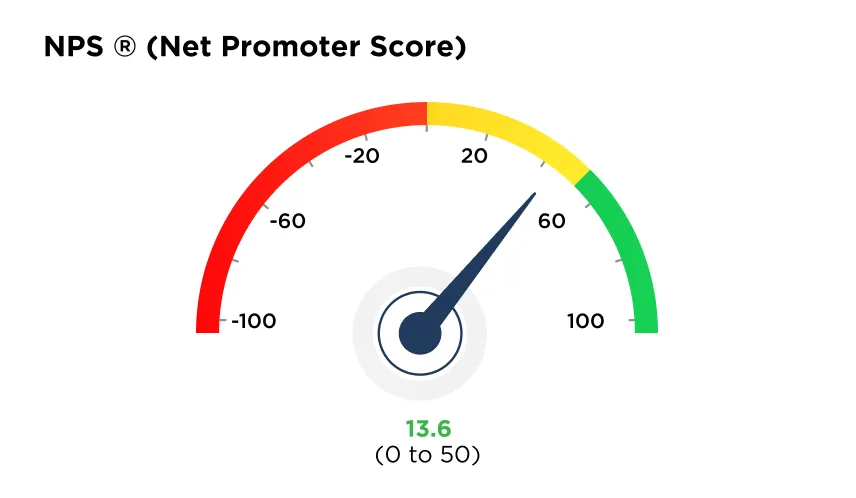What Is a Net Promoter Score Question?
The Net Promoter Score (NPS) question forms the backbone of customer loyalty measurement. At its core, this question asks customers how likely they are to recommend your company, product, or service to others on a scale of 0-10. This seemingly simple question provides powerful insights into customer satisfaction and loyalty.
Why NPS Matters for Your Business
NPS isn’t just another metric—it’s a predictor of business growth. Organizations with higher NPS scores typically experience better retention rates, increased customer lifetime value, and stronger word-of-mouth referrals. For Salesforce users, integrating NPS feedback directly into customer records creates a comprehensive view of the customer relationship.
Structuring Your NPS Survey for Maximum Impact
The Two-Part NPS Question Framework
Effective NPS surveys follow a two-part structure:
- The Rating Question: “On a scale of 0-10, how likely are you to recommend [Company/Product/Service] to a friend or colleague?”
- The Follow-Up Question: An open-ended question that uncovers the reasoning behind the score.
This combination delivers both quantitative measurement and qualitative insights that drive action.
Categorizing Respondents: Promoters, Passives, and Detractors
Based on their responses to the rating question, customers fall into three categories:
- Promoters (9-10): Loyal enthusiasts who fuel growth
- Passives (7-8): Satisfied but unenthusiastic customers vulnerable to competitors
- Detractors (0-6): Unhappy customers who can damage your brand through negative word-of-mouth
Understanding this segmentation helps prioritize follow-up actions and improvement initiatives.
Crafting Effective NPS Questions
Perfecting Your Primary NPS Question
While the standard NPS question works well, consider these variations to match your specific context:
- Product-focused: “How likely are you to recommend our [specific product] to others in your industry?”
- Service-oriented: “Based on your recent support experience, how likely are you to recommend our services?”
- B2B context: “How likely are you to recommend [Company] to other business partners?”
Designing Follow-Up Questions That Drive Action
The follow-up question transforms NPS from a measurement tool into an action plan. Consider these approaches:
- For Detractors: “What specifically disappointed you about your experience?”
- For Passives: “What would it take for us to earn a higher score from you?”
- For Promoters: “What do you value most about our product/service?”
These targeted questions generate specific insights that inform improvement strategies.
Timing and Context: When to Ask NPS Questions
Relational vs. Transactional NPS Surveys
NPS surveys generally fall into two categories:
- Relational NPS: Measures overall customer loyalty, typically sent quarterly or biannually
- Transactional NPS: Evaluates specific interactions, sent after key touchpoints like purchases or support interactions
Both approaches provide valuable but different perspectives on customer sentiment.
Strategic Timing for Different Business Models
The timing of your NPS survey significantly impacts response rates and data quality:
- SaaS companies: Send after onboarding completion or feature adoption milestones
- E-commerce: Deploy post-delivery when the product experience is fresh
- Service businesses: Schedule after service completion but before the impact fades
Implementing NPS in Salesforce with SurveyVista
Seamless Integration with Your Customer Data
SurveyVista’s native Salesforce integration ensures NPS responses connect directly to customer records. This integration enables:
- Automatic updating of customer profiles with NPS scores
- Triggering of workflows based on response categories
- Correlation of NPS data with other customer metrics
Automating Response Workflows
Transform feedback into action with automated workflows:
- Route detractor feedback to customer success teams for immediate follow-up
- Flag passive responses for targeted engagement campaigns
- Invite promoters to referral programs or case studies
Analyzing NPS Data for Business Growth
Beyond the Score: Extracting Actionable Insights
While the NPS calculation provides a valuable benchmark, the real value comes from analyzing:
- Trends over time across customer segments
- Correlation between NPS and customer behaviors
- Sentiments & Themes from open-ended responses
- Comparison against industry benchmarks
Closing the Feedback Loop
The most successful NPS programs follow a continuous improvement cycle:
- Collect feedback through strategically timed surveys
- Analyze responses to identify improvement opportunities
- Implement changes based on customer input
- Communicate actions taken to respondents
- Measure impact through subsequent surveys
Best Practices for NPS Success
Avoiding Common NPS Question Mistakes
Even experienced teams make these common mistakes:
- Asking too many questions, reducing completion rates
- Using biased language that skews responses
- Failing to segment data for meaningful analysis
- Not acting on the feedback received
Optimizing for Mobile and Multi-Channel Experiences
Today’s customers provide feedback across multiple channels. Ensure your NPS surveys:
- Display properly on all devices
- Maintain consistent branding across channels
- Require minimal clicks to complete
- Respect customer communication preferences
Transforming NPS Questions into Customer-Centric Growth
The power of NPS lies not in the question itself but in how you use the answers. By implementing a thoughtful NPS program with SurveyVista’s Salesforce-native platform, you create a continuous feedback loop that drives customer-centric improvements across your organization.
When customer feedback flows seamlessly into your Salesforce environment, every team gains the insights needed to enhance the customer experience, improve retention, and ultimately drive sustainable growth.
Frequently Asked Questions
How often should we send NPS surveys to our customers?
For relational NPS, quarterly or biannual surveys are recommended. For transactional NPS, send surveys after key interactions like purchases or support cases. Avoid survey fatigue by maintaining appropriate intervals between surveys based on your customer journey.
What’s a good Net Promoter Score for my business?
A “good” NPS varies by industry. Generally, any positive score (above 0) is acceptable, 50+ is excellent, and 70+ is world-class. Compare your score against industry benchmarks and focus more on improvement trends rather than absolute numbers.
How can we increase our survey response rates?
Keep surveys short and mobile-friendly, clearly communicate the time commitment, personalize your outreach, explain how feedback will be used, and consider timing surveys after positive interactions. Following up on feedback also encourages future participation.
Should we offer incentives for completing NPS surveys?
While incentives can increase response rates, they may bias results. If used, keep incentives small and universal (not contingent on positive feedback). Consider non-monetary rewards like access to exclusive content or early feature access.
How do we effectively follow up with detractors?
Respond quickly (within 24-48 hours), have the appropriate team member reach out personally, acknowledge their concerns without defensiveness, outline specific steps you’ll take to address issues, and schedule a follow-up to ensure resolution.
More Like This

Rajesh Unadkat 
Founder and CEO
Rajesh is the visionary leader at the helm of SurveyVista. With a profound vision for the transformative potential of survey solutions, he founded the company in 2020. Rajesh's unwavering commitment to harnessing the power of data-driven insights has led to SurveyVista's rapid evolution as an industry leader.
Connect with Rajesh on LinkedIn to stay updated on the latest insights into the world of survey solutions for customer and employee experience management.



